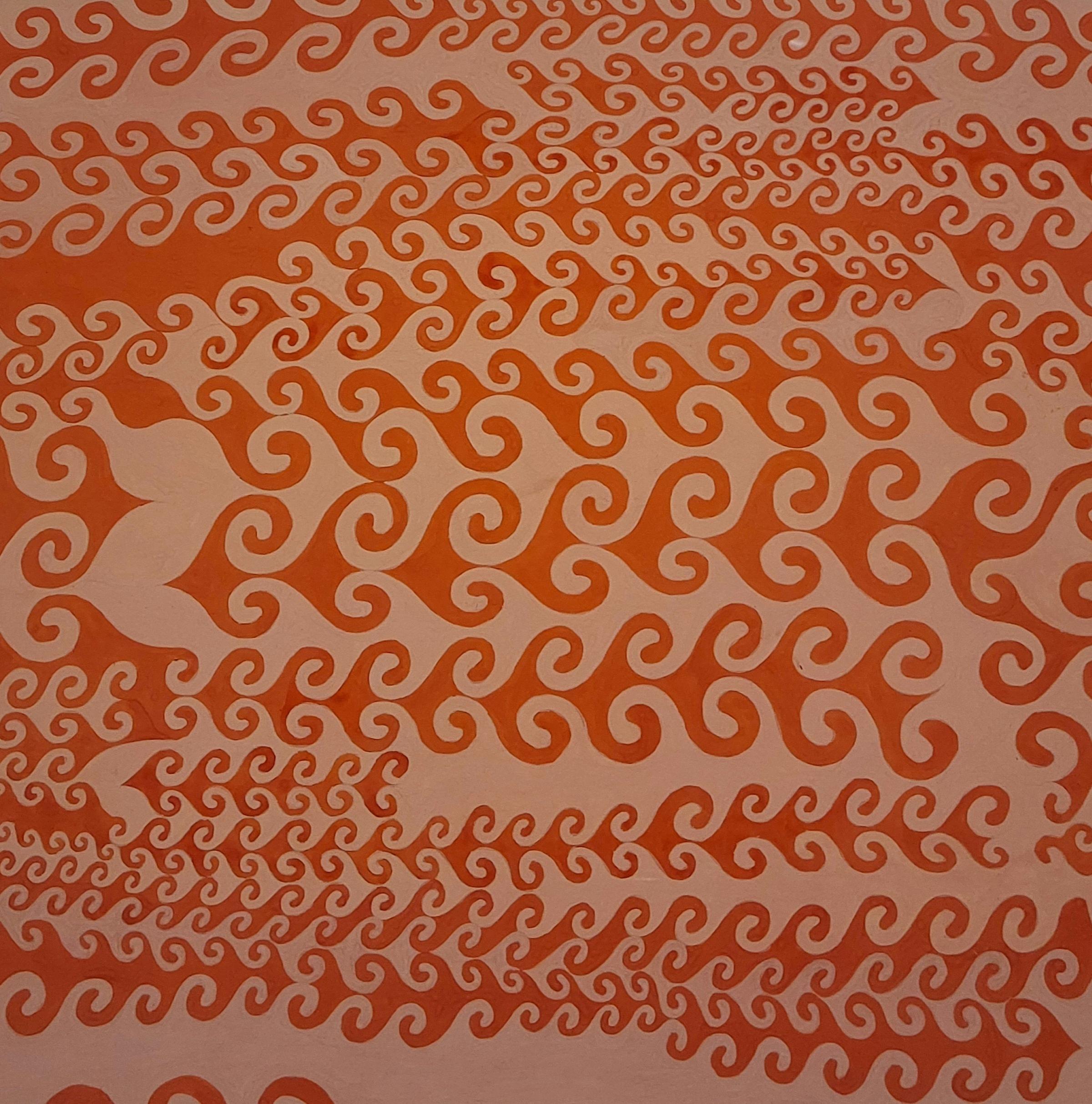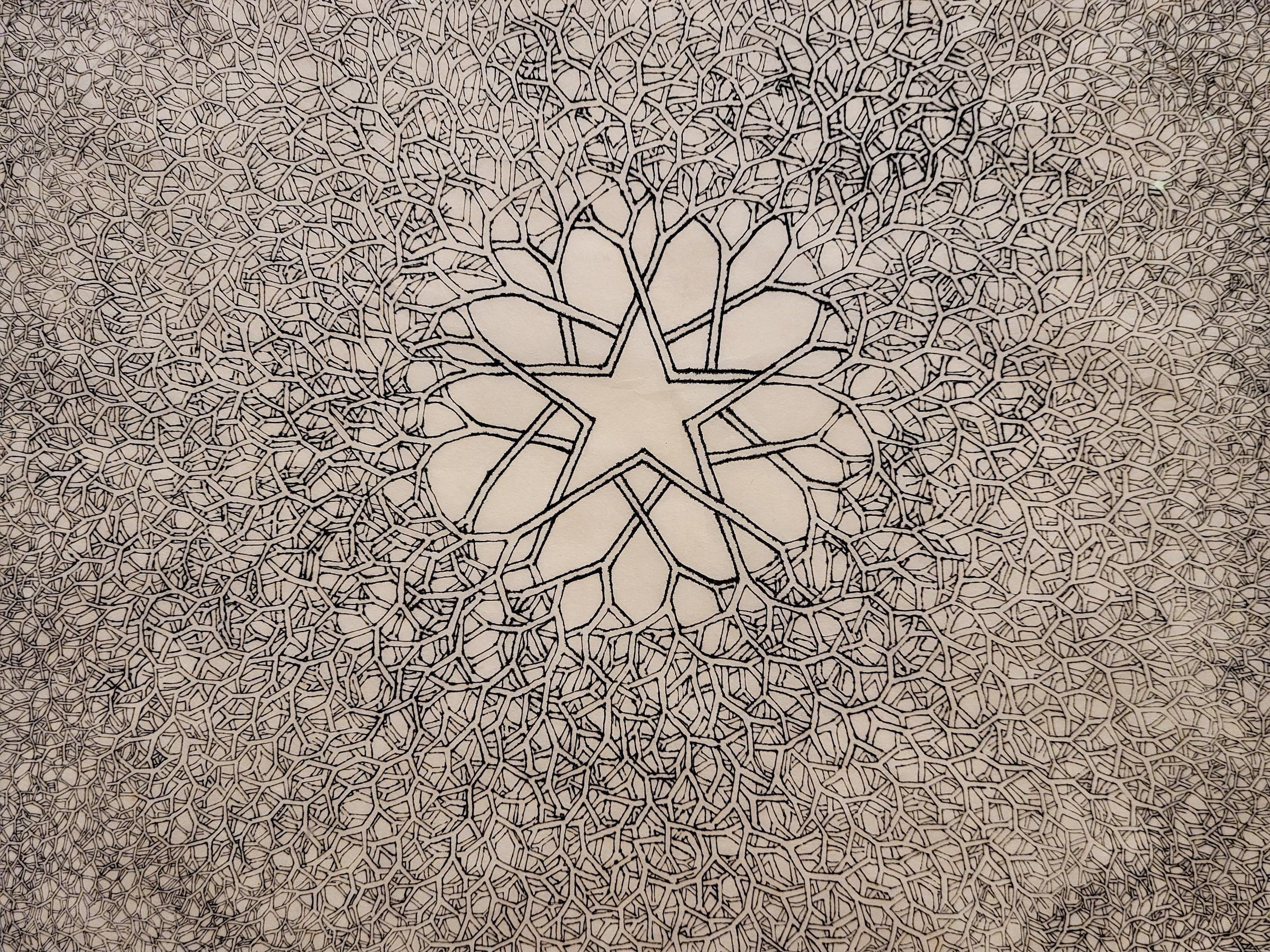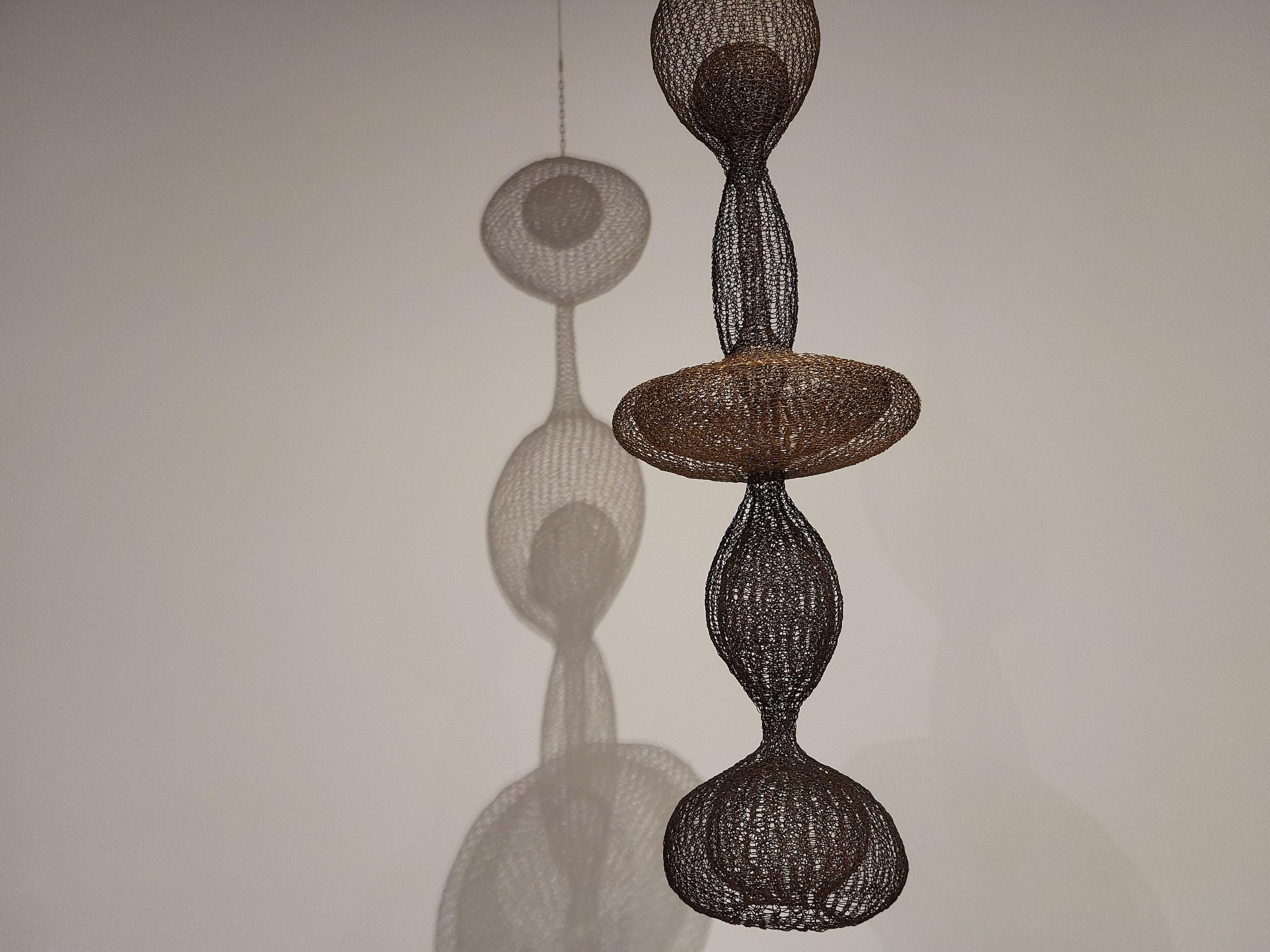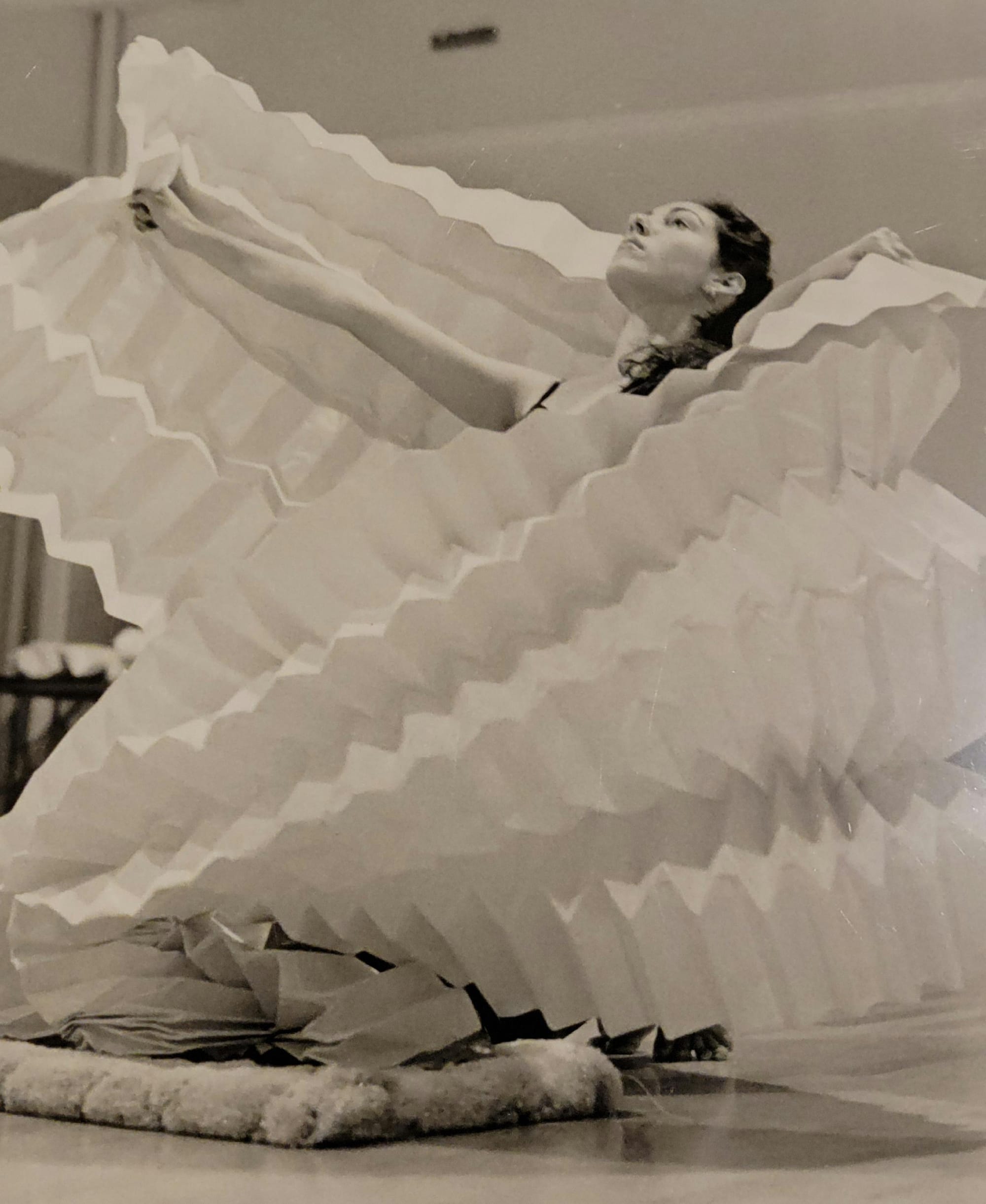Ruth Asawa Through Line
Whitney Museum of American Art
99 Gansevoort St.
NYC
Through Jan. 15, 2024
Count to 10, taking time to closely examine the hypnotic pattern below, while you breathe in and breathe out. What’s the background? What’s the foreground? Does it look like red swirls on pink or pink hooks and waves on red?

The meander painting is among more than 100 works by Ruth Asawa currently on display at the Whitney Museum of American Art. As the weather turns crisp and days contract in time, and art museums provide ample spaces for indoor meditative, contemplative practices, it’s an ideal season for meandering through the pieces.
Repeating patterns and shapes in folds, Asawa created mountains and valleys inspired by nature, that morphed into costumes. Her forms give a sense of moving, expanding and contracting — like breathing, said Whitney conservator Clara Rojas-Sebesta during the institution’s online session about the exhibition.
The meander painting shows lines that curl in on themselves, with a sense of continuing ad infinitum, said Kim Conaty, a co-curator of the exhibition, who also presented in the online class.
The artist emphasizes her observation of the outdoors, through abstract patterns and forms. The show offers distinct pleasures in the contradictions of going inside to go outside to further go inside your own being, finding solitude amidst the buzz of the Whitney.
Asawa described her artistic practice using the contrasting language, quoted by Conaty and Rojas-Sebesta, as “meditative torture.”

During her childhood in California, Asawa enjoyed spending time outdoors. On Saturdays, she attended Japanese culture and calligraphy classes. Her early calligraphy seems to have set the foundations of mindful meditation, not only in the creation of her art but also for viewers’ experiences.
In 1942, during World War II, the US government incarcerated people of Japanese ancestry. When Asawa was 16, she and her family were removed from their farm and forced to live in internment camps. A Ruth Asawa website, maintained by a small staff including her children and grandchildren, explains that Asawa’s father was taken to a camp in New Mexico. It states that Ruth, her mother, and five siblings had to live at the Santa Anita race track near Pasadena, Calif., in horse stalls, which she recalled reeked with a horrible, constant stench of horse dung. Under these circumstances, she took drawing lessons from three Walt Disney Studio animators, also relocated and imprisoned at the camp. After five months, the Asawas were moved from California to the Rohwer Relocation Center, facilities surrounded by armed guards, watch towers and barbed wire, in rural Arkansas.
From 1946 to 1949, Asawa studied at Black Mountain College, a progressive, experimental school near Asheville, N.C. Her teachers, Josef Albers, an artist famous for geometric abstraction, and Buckminster Fuller, deeply influenced her work. Albers repeatedly stated that he was not teaching the students how to draw but how to see. In her abstract drawing of the tree, the mathematical precision of the branches makes lying under the canopy of the spreading tree feel like looking up, inside one of Fuller’s geodesic domes. She returned to calligraphy in the mid-1950s, taking classes with a renowned calligrapher, a Buddhist monk, Hodo Tobase.
A disciplined quality of mental transcendence embeds in her work a sense of both escaping into and getting lost in her art.
In the above image, her ink on Japanese paper drawing “Untitled” (“Tied-Wire Sculpture Drawing with Five-Pointed Star in Center”) captures a tree expanding from the center. Rojas-Sebesta noted the fine lines radiate into a breathing, growth pattern, “as one change amplifies the next.”

Asawa is probably best known for her looped-wire sculptures. In her hanging, multi-shaped brass and steel wire artwork, the recurring patterns resemble her meander studies. But the connection to drawing is clear. The exhibition’s wall text quotes Asawa saying, “‘Sculpture was just an extension of drawing.’” Asawa’s spirographic shapes are drawn with lines of wire in three dimensions.
The text states that her fellow-artist friend Ray Johnson called her wire sculptures “‘forms within forms within forms.’” The play of going inside and outside, in a confluence of a physical and a mental journey reappears. Like shadow puppets, her wire objects create drawings on the walls, toying with notions of space.
Asawa’s ideas behind lines and wire crossing into three dimensions continued with her paper folding. In the Japanese art form origami, traditionally two-dimensional flat-surface canvases pop into three-dimensional sculptures.
“Drawing is such a through line in her work,” said Conaty.
Observing Asawa’s art can be a meditative practice that asks what is the through line that you see in your work. What skein runs through your inside-out, outside-in, and the life you draw and shape, while breathing in our dimension of time?
Where I’m going next: Artwork at NYCHA (the New York City Housing Authority).






